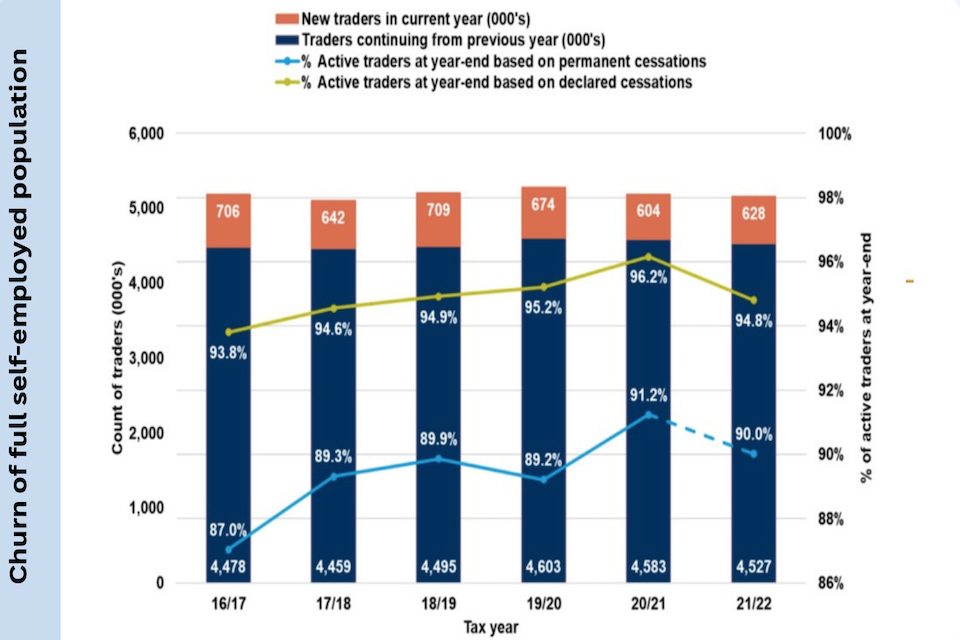The Self-Employment Income Support Scheme (SEISS) final evaluation July 2023 (HTML)
Published 24 April 2024
1. The Self-Employment Income Support Scheme (SEISS) final evaluation July 2023
The policy and key statistics:
- The SEISS was a central part of the government’s response to the COVID-19 pandemic.
-
SEISS aimed to support self-employed individuals whose businesses were adversely affected by COVID-19 restrictions.
- It aimed to: Quickly support individuals reliant on self- employed income; Enable self-employed people to remain in business; and Provide support broadly equivalent to the Coronavirus Job Retention Scheme.
- Delivered as a series of 5 grants between May 2020 and September 2021, with policy adjustments based on changes in COVID-19 restrictions.
- A total of 2.9 million eligible self-employed individuals claimed SEISS grants, totalling £28.1 billion.
2. Methodology
The evaluation includes:
- A process evaluation which assessed how effectively the scheme was designed and delivered.
- An impact evaluation which covers the impacts across all SEISS grants and assesses the scheme’s VFM.
- A quasi-experimental approach was taken, using a Fuzzy Regression Discontinuity Design (RDD). The cut-off point was at £50,000 average trading points.
A Value for Money (VFM) approach was used, which followed the ‘4 Es’: economy, efficiency, effectiveness and equity. It considered:
- Social value: considering the scheme’s value to society (e.g. effect on public welfare).
- Exchequer value: considering direct effects on public finances.
3. Findings
- Good VFM was found with a net benefit to society of £14.2bn and a social benefit to cost ratio 3.8:1.
-
Helped support trading profits and incomes for many self-employed people who were most affected by COVID-19.
- The SEISS was designed and implemented swiftly. The scheme was easy to understand, and the claim process was simple.
- Within 12 days of the scheme opening, 88% of claims for the first grant were paid.
- Total benefits are estimated to be worth £19.3bn.
Error and fraud were effectively managed throughout the lifetime of the SEISS. Final estimate of overall error and fraud estimated to be 5.2% which compares favourably with overall UK tax gap for Self Assessment which is estimated to be 11.2% in 2021 to 2022.
- SEISS helped businesses continue trading in the short term. However, long term impacts less clear due to lag in self assessment data.
- Eligible claimants were 2.8 percentage points more likely to remain trading in 2020-21 than those assessed as ineligible at the scheme’s £50,000 average trading profits eligibility threshold.
- The SEISS supported demand in the wider economy, providing some macroeconomic benefit.
- A lesson learned from the SEISS is that improved data and more timely reporting of self-employed profits could have led to improved targeting of the scheme, a reduction in deadweight and the inclusion of some groups who were not able to access the scheme.

Churn of full self-employed population graph.
4. Impacts
This programme succeeded in ensuring most self-employed people were protected from a significant drop in income that they may otherwise have experienced.
The analysis also shows that the SEISS helped support businesses to continue trading.
